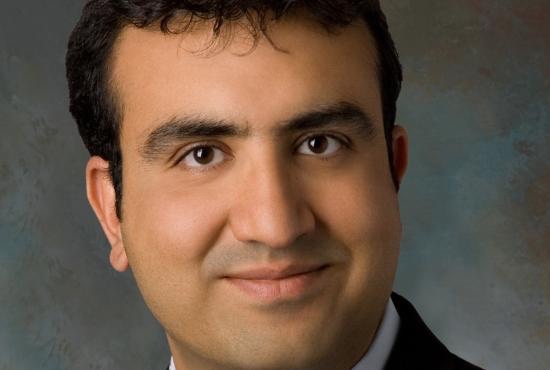Thoughts on when and where to look for Big Deals in the Basin.
by J. Chase Beakley
Common sense would suggest that as the icy fingers of debt grow longer and oil prices continue to drag, mergers and acquisitions cannot be far behind. Larger companies with greater stability should use this opportunity to buy assets at historically low prices, or snap up smaller companies that could prove to be of great value during the next up cycle.
However, the tidal wave of M&A that financial analysts have been ceaselessly heralding since the end of last year has not yet made landfall, and that prompts the question: Under what conditions will significant mergers and acquisitions take place and, if they do, how will they affect the market in the long term?
While hedging provided somewhat of a shield for E&Ps, service companies have been exposed to the full force of the oil price drop from the very beginning. As a result, many small service companies have been in dire straits for some time and consolidation amongst the largest players will not make things any easier.
The Big Get Bigger
When service giant Schlumberger added to its already substantial girth by acquiring Cameron International last October, major competitors Halliburton and BakerHughes moved into merger talks shortly after. At the time this article was written, the HaliBaker deal was still being stymied by European regulatory bodies and while Baker Hughes has maintained that it will sell off whatever amount of assets necessary to get the deal done, the market remains skeptical of its success. By all accounts, the two firms are among the top five largest global services companies and many fear that a merger will blunt competition. Energy officials from Angola and Brazil have come out in opposition to the deal, and many on the production side worry that it would impact their service costs.
To give a sense of the magnitude, Schlumberger and Cameron’s combined annual revenue for 2014 was $58.8 billion, Baker Hughes and Halliburton’s combined annual revenue in that same year amounts to $57.6 billion. The next largest oilfield service company, Weatherford International, earned just $14.9 billion in 2014.
Should the HaliBaker deal succeed, a dramatic gulf between the top two companies and the rest of the pack will widen. This could drive service costs up in markets where the two giants have distinct advantages, and with lower-for-longer oil prices they might be able to choke out smaller competitors with predatory pricing in other markets. With a number of oilfield service companies already dramatically overleveraged and struggling to keep their heads above water, this merger would certainly be more bad news.
But couldn’t these desperate times provide an opportunity for stronger companies to make thrifty acquisitions? Could a knight in shining armor emerge to breathe new life into struggling service companies? Ravi Rayu is a Managing Partner at Sheridan Capital, where he works with middle market oil service companies, and he doesn’t believe debt-burdened companies should be waiting on a white knight.
Cautious Buyers
Speaking of the stronger oilfield service players, Rayu said, “For most, their number one focus is on their own liquidity. They can’t think of acquiring anyone even if they’re historically cheap, because liquidity trumps everything right now.” In the context of lower-for-longer oil prices, even the most well-positioned companies can’t risk having a major acquisition go south, and getting an M&A deal done doesn’t help much if the newly acquired company puts an immediate drag on your balance sheet.
For example, service companies like National Oilwell Varco and Core Labs are still healthy and managing their debt very well, but are hesitant to take risks in such an unforgiving climate. Core Labs’ debt-to-market-capitalization is a mere 9 percent compared to an average of 216 percent among service companies researched by EnerCom Consulting. NOV has the third lowest debt-to-equity ratio of S&P 500 energy and materials companies at 24 percent, and has freed up $5.7 billion dollars of liquidity in cash reserves and revolving credit. But although NOV has made M&A a big part of their growth strategy in the past, at the moment they’re being extremely cautious. CEO Clay Williams said in a recent industry conference, “We really need to be patient and make sure we’re getting good value for our shareholders as we move forward on transactions.”
S&P 500 Energy and Materials Companies with the lowest
Debt-to-Equity ratios
When buyers like NOV do eventually decide to move, Rayu believes they’ll be in the market for small technology players that will provide increased efficiency for their customers. “Buyers are going to be looking for technologies, and those companies may still be able to sell for higher multiples,” said Rayu. “Especially if a company feels like their competitors are moving on a technology, they’ll still pay top dollar to take it off the market.”
At the moment there’s no need for haste. Most buyers will likely delay acquisitions until the price of oil shows some sign of recovery. Until then, service companies are going to remain highly discounted.
Low commodity prices are discouraging M&A on the production side as well. With oil under $40 and looking to hover there for a while, there’s simply too large of a value gap between buyers and sellers.
Bridging the Gap
Paul Puri is the managing director at Capital Alliance in Dallas and has overseen energy company mergers in excess of $400 million. “The reason we’re not cutting a lot of deals right now is because the value of land in the Permian has stayed pretty consistent in the past two years despite the drop in commodity prices,” said Puri. “If you’re a producer and you hedged, then you’re not ready to cut a deal just yet. There’s a big enough value gap.” Producers holding valuable acreages are choosing to try and restructure their debt, sell nonessential properties, and in some cases even file for Chapter 11 bankruptcy, rather than cashing out for 40 percent of their peak value.
Puri is confident that as the year progresses that value gap is going to be crossed, but if we do see some M&A on the production side it’s likely to come from private equity groups. “Private equity funds are playing the rebound over the next five years so they’re willing to make bold bets. No one else has the cash or timeline to do that in this market, so their money would be welcome now,” said Puri.
The door is open for PE capital because even the biggest production companies can’t afford to the risk of making a bad acquisition. A spokesperson for ExxonMobil recently intimated that they wouldn’t be eager to acquire companies strapped with debt; instead, they’ll be looking to prize assets away from those debt-choked companies.
However, assets have been coming to market more slowly than expected. James Constas of EnerCom Energy Consulting performs strategic communications for oil and gas companies working through reorganization and has seen the process firsthand. “By mid-December 2015, we saw 41 companies file for Chapter 11 bankruptcy protection due to the sharp decline in asset prices,” said Constas. Using Chapter 11 allows companies to reorganize their debt and buy time, but that means their assets are tied up in a lengthy arbitration process that can prevent them from seeing light of day for quite a while. “It’s logical to anticipate more court-supervised asset sales, but it might take longer than expected for those assets to hit the general market,” said Constas.
As overleveraged companies get more desperate and properties tied up in the courts begin to surface, there will be plenty of healthy outfits ready to snap up quality properties. Constas continued, saying, “Companies like Diamondback Energy and Pioneer Natural Resources recently raised new rounds of capital. Partly to stay relevant in a lower-for-longer commodity price environment, but also to keep ample liquidity should a strategic asset become available at the right price.”
Right now staying lean and efficient is paramount, so if a company can acquire bolt on assets, they will, but it seems unlikely that even the biggest E&P players will risk a big M&A deal, no matter how cheap it might be.
Sizable transactions could however, still originate from foreign investors, should they be given the chance.
Foreign Lifelines
Foreign holding companies, particularly those from China, might be interested in playing the long game in the Permian Basin. As doubt surrounding the Chinese economy deepens, Chinese investors are eager to park their money in hard assets offshore, and oil and gas properties in the Basin are a great bargain right now.
In October of 2015, Chinese investment holding company Yantai Xinchao Industries bought the Midland- based Plymouth Petroleum and Tall City Exploration for $1.3 billion. In a capital-starved market, foreign investment could be a lifesaver and, much like U.S. private equity, these investment holding companies have the funds and the timeline to take bigger risks.
The main obstacle to future Chinese asset deals is opposition from the Committee on Foreign Investment in the United States (CFIUS). Chinese asset deals come under greater scrutiny from CFIUS because of national security concerns. The oversight committee can kill the deals if the properties being sold border U.S. government or military facilities, threaten U.S. cyber security, or if they’re perceived to unfairly shut out competition from U.S. companies.
Still, interest from foreign investors remains a possibility, especially if we begin to see property values in the Basin start to slide.
Waiting Game
Going forward, it would appear that a major outbreak of M&A is less likely than some believe, and will probably only occur when oil prices show signs of recovery.
Until then, oilfield service companies in a position to buy will move slowly to ensure that shareholder value and liquidity won’t be disrupted by an acquisition. If the HaliBaker deal succeeds, smaller players will have to find ways to stay competitive with the two giants, most likely by making moves for technology-centered companies that will place them out in front of the curve.
On the production side, it’s difficult to tell if the value gap will close in time for serious M&A and asset sales to occur. It’s more likely that as oil prices continue to stay low, more E&P companies will choose the protection of Chapter 11 than selling out for a slim slice of their peak value. This will tie up more properties in court, forcing diligent companies to seek out and purchase isolated assets that they feel they can incorporate quickly and efficiently. What major deals do occur are likely to come from private equity funds looking to ride the next up cycle, or perhaps foreign investors looking for a haven for their money.
Chase Beakley writes for various publications on business, travel, and literature. He can be reached at chasebeakley@gmail.com.














